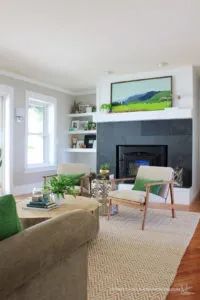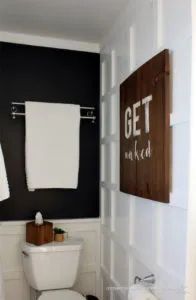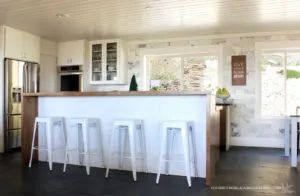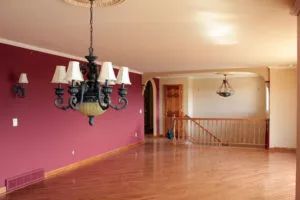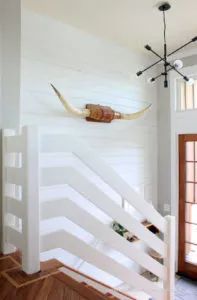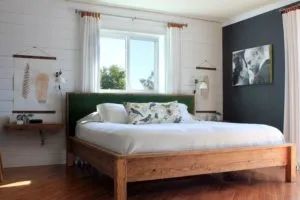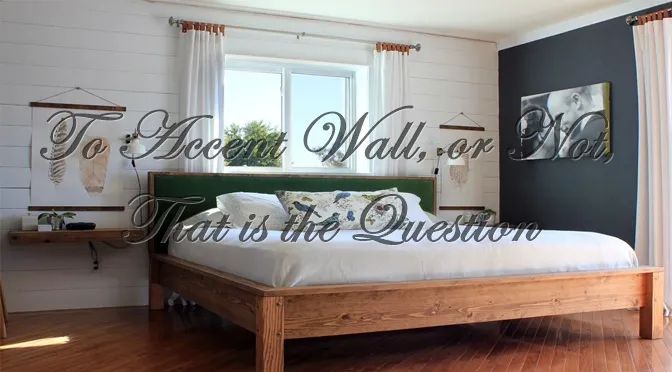
To Accent Wall, or Not, That is the Question
Ahhh, accent walls. Such an interesting and sometimes touchy subject. If you’re debating whether or not to add an accent wall to your home, here are the questions to ask before starting, as well as my general rules of thumb and guidelines.1. Is there an interesting architectural feature on this wall that I want to draw attention to?
Let’s start with the easiest question to answer: Does this wall have a fireplace, built in bookshelves, a big window, or a stunning view that you want to draw the attention toward?
2. Just how much interest do I want this wall to command?
Whether there is or isn’t an interesting focal point, there are two ways to go about creating an accent wall. The first (and easiest) is bold and dramatic, like painting the wall surrounding the fireplace a deep, saturated color to make the fireplace (or other feature) stand out. The second way is more soft and subtle, created with a texture difference. This route brings in a different material such as wood, tile, or a plaster texture, which brings me to my next question. What material do I want my accent wall made of? How about texture?
3. What materials do I want to use? Do I want to add texture?
Paint is the quickest, cheapest way to get an accent wall. Minimal effort for maximum return. Another favorite material of mine is wood planking. In our home, we’ve used both reclaimed cedar siding and new tongue and groove boards that create a rich, cozy texture you can see and feel. Keep it natural, stain, or paint it, either way you can’t go wrong. Or, add trim strips to create a grid, board and batten, or other design before painting.
In kitchens or bathrooms, a full wall of tile can make a bold statement, especially in cases where there isn’t a natural cut off point.
4. Which wall should I accent? How will this wall/room benefit from a feature wall?
If the room is a big, boring box with furniture inside it, an accent wall may be a good addition. Just as choosing a material is important, choosing which wall to accent is probably even more crucial. In the case of a living room, I seem to prefer accents on a full wall behind the sofa. In a few cases, a dark accent on the television wall may help take the focus off the big screen by blending the colors together.
In an open floor plan, I don’t like when an accent wall continues from one ‘room’ to the next, such as the painted wall previously running the length of our living and dining spaces.
I prefer to pick a wall that will help define and separate a larger space into ‘rooms.’ Big, tall entry walls are also a natural accent wall placement, especially because the large space is hard to fill with art only.
Our painted tongue and groove entry accent wall kind of pulls double duty, covering the heavily knock down textured walls while creating a soft, textural backdrop. In this split entry situation, hanging a large piece of art is tricky because it teeters on being upstairs or down. By adding the accent, it nicely fills the space, going floor to ceiling, which allows the longhorns to hang toward the top without looking awkwardly high. That’s a subtle segue into our next point.
5. What is going on/in front of this wall, after the accent?
In the event there isn’t an interesting feature and the room isn’t a section of a larger open space, consider what will hang on the wall or sit in front of it. It’s great to accent the wall the largest piece of furniture sits against, such as a sofa or bed. If you have a favorite piece of art, draw attention to it with a subtle accent wall.
Once you’ve answered those questions, the hardest part has been determined. Now it’s time to get to work.

